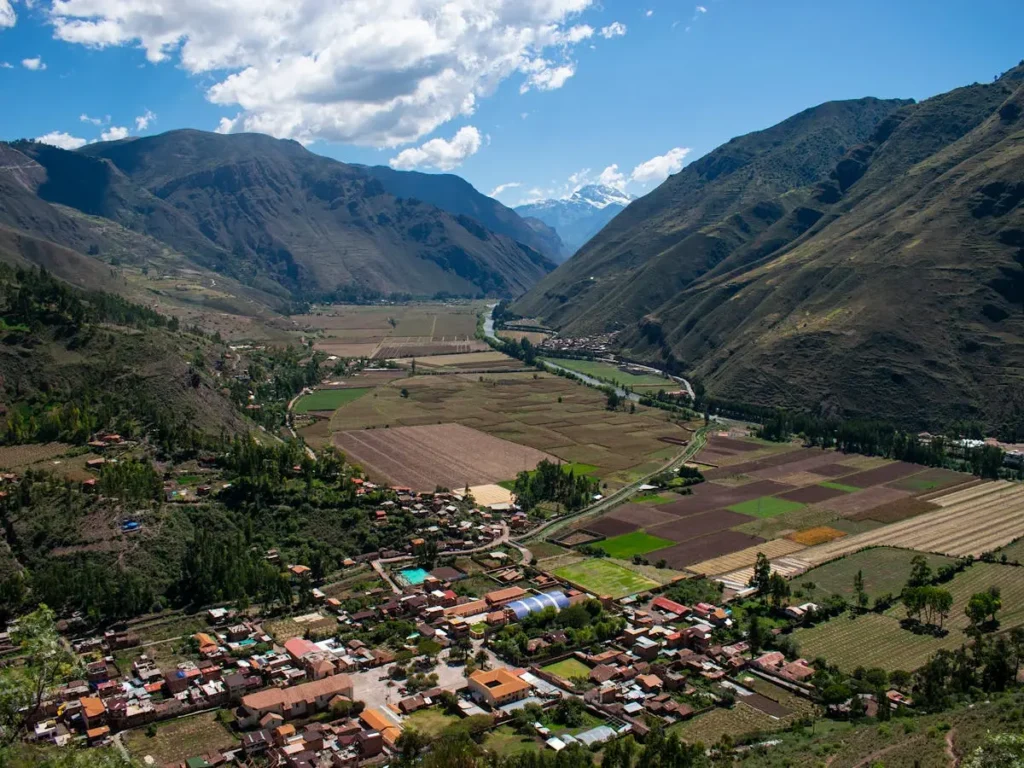The Sacred Valley of the Incas: A Complete Guide

Table of Contents
Nestled in the heart of the Peruvian Andes, the Sacred Valley of the Incas is one of the most breathtaking and historically rich regions in South America. Located near Cusco, this valley was a crucial area for the Inca civilization, offering fertile lands, an excellent climate, and an important connection between Cusco and Machu Picchu. Today, the Sacred Valley is a must-visit destination for travelers seeking adventure, history, and stunning landscapes.
In this guide, we will explore the history, key archaeological sites, cultural facts, and travel tips for making the most of your visit to the Sacred Valley.
1. History of the Sacred Valley
The Sacred Valley was of immense importance to the Incas due to its geographical and climatic conditions, which made it perfect for agriculture. The valley was also a spiritual hub, filled with temples, ceremonial sites, and strategic military centers.
The Incas developed advanced farming techniques here, building agricultural terraces and using irrigation systems that are still in use today. They also constructed some of the most magnificent structures in the region, which remain standing despite centuries of erosion and seismic activity.
2. The Most Important Ruins in the Sacred Valley
2.1 Pisac
Location: 33 km from Cusco (about a 1-hour drive).
Highlights: Ancient terraces, a sun temple, and a large Inca cemetery.
Pisac is famous for its agricultural terraces, which follow the natural curves of the mountains. The ruins include military, religious, and agricultural structures. The site is also home to one of the largest known Inca cemeteries, with thousands of tombs carved into the cliffside.
Another highlight of Pisac is its traditional market, where visitors can buy authentic handicrafts, alpaca textiles, and locally grown produce.
2.2 Ollantaytambo
Location: 72 km from Cusco (about a 2-hour drive).
Highlights: The Temple of the Sun, massive stone terraces, and an Inca-era town.
Ollantaytambo was an important military and religious center. The site features massive terraces leading up to the Temple of the Sun, an impressive structure made of finely carved stones that were transported from a quarry over 6 km away.
The town of Ollantaytambo is one of the few places where the original Inca urban layout is still intact. Walking through its narrow stone streets gives visitors a glimpse into what life was like during the Inca Empire.
2.3 Moray
Location: 50 km from Cusco (about a 1.5-hour drive).
Highlights: Circular terraces with a unique microclimate.
Moray is one of the most intriguing sites in the Sacred Valley. The circular terraces resemble an amphitheater and are believed to have been an Incan agricultural laboratory. The temperature variation between the top and bottom levels can be as much as 15°C (27°F), which suggests that the Incas used Moray to experiment with different crops.
2.4 Maras Salt Mines
Location: Near Moray, about 10 minutes away.
Highlights: Over 3,000 salt evaporation pools used since pre-Inca times.
The Maras Salt Mines are a fascinating sight. These small pools, built on the side of a mountain, are filled with water from a natural salty spring. As the water evaporates, salt crystals form and are harvested manually. Local families have owned and operated these mines for generations.
2.5 Chinchero
Location: 30 km from Cusco (about a 45-minute drive).
Highlights: A colonial-era church built on Inca foundations and traditional textile workshops.
Chinchero is often referred to as the “birthplace of the rainbow.” This town is famous for its textile artisans, who use traditional weaving techniques passed down through generations. Visitors can watch live demonstrations of how alpaca wool is dyed using natural pigments and woven into beautiful textiles.
The Chinchero ruins include well-preserved agricultural terraces and a colonial church built over an ancient Inca palace.
3. Cultural Insights and Interesting Facts
The Incas believed the Sacred Valley was a gift from the gods, providing the best conditions for agriculture.
Many local people in the valley still speak Quechua, the language of the Incas.
The festival of the Lord of Torrechayoc is one of the most important religious celebrations in the Sacred Valley.
Quinoa, potatoes, and corn—some of the world’s most essential crops—were first cultivated in this region.
4. How to Visit the Sacred Valley
4.1 Best Time to Visit
The best time to visit the Sacred Valley is during the dry season (April to October) when there is less rain and the landscapes are vibrant and green. The rainy season (November to March) can make some hikes and sites more challenging due to muddy trails.
4.2 How to Get There
The easiest way to visit the Sacred Valley is from Cusco. Many travelers join a guided tour, but it’s also possible to rent a car or take local buses to explore at your own pace.
4.3 Recommended Itinerary
For a full-day tour:
Morning: Visit Chinchero, Moray, and the Maras Salt Mines.
Afternoon: Explore Ollantaytambo and take a train to Machu Picchu or return to Cusco.
For a two-day tour:
Day 1: Pisac, Ollantaytambo (overnight in Aguas Calientes).
Day 2: Machu Picchu and return to Cusco.
5. Adventure Activities in the Sacred Valley
For those seeking adventure, the Sacred Valley offers a variety of outdoor activities:
Hiking: Trekking routes like the Huchuy Qosqo Trail provide stunning views of the valley.
Mountain Biking: Ride through scenic trails in Maras and Moray.
Zip-lining: Several locations, including near Ollantaytambo, offer exhilarating rides.
Rafting: The Urubamba River provides great rafting opportunities for beginners and experienced rafters.
Book Inca Trail
Book Inca Trail
Salkantay trekking
biking rafting zip line
Lares trek
Ausangate Peru
Inca Trail
Inca Trail
Check Availability
